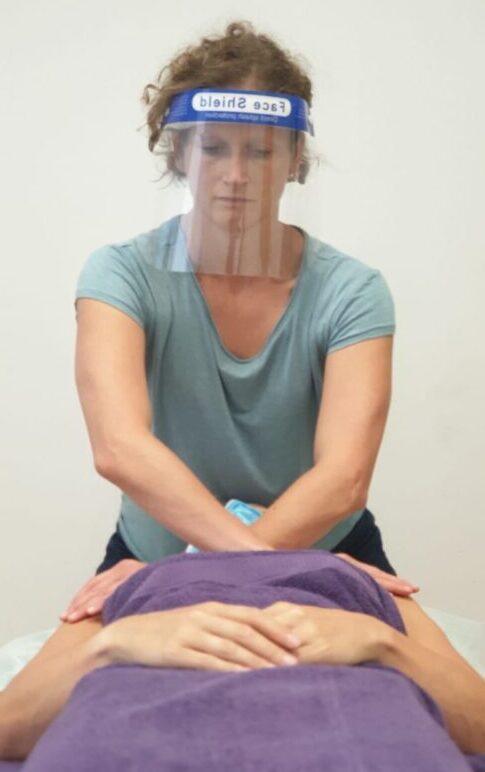
The world of fascia – myofascial release
I have been passionate these past couple of years by the amazing world of fascia, connective tissues and myofascial lines defined by Thomas Myers in Anatomy Trains (2014). What we call biotensegrity is also referred to as the ‘new biomechanics’ by the orthopedic surgeon Stephen M. Levin (2015). This understanding of how the body moves and defies gravity can help towards using our body more efficiently and effortlessly.
What is myofascia?
Myo stands for muscle and fascia stands for fascia, or in other words the all pervasive connective tissue and fibrous network that shapes our body. Fascia has proprioceptive functions, which means it has receptors that give us an awareness of our body in space.
Healthy fascia is hydrated and glides easily. When the tissues don’t glide over each other, we experience adhesion and what is commonly known as ‘knots’. The best way to keep it healthy is to move, stretch and massage.
What is myofascial release good for?
Relieve chronic pain ITB syndrome
Help addressing poor postural habits Frozen shoulder
Sports injuries Fibromyalgia
Disc problems Carpal tunnel syndrome
Physical stress Chronic fatigue syndrome
Psychological stress Headaches
Fibromalgia Scars
Plantar fasciitis
Techniques I use to address the myofascial system
I will include some myofascial release techniques into my treatment when needed. This includes skin rolling, sacral release and unwinding amongst others. Transverse soft tissue release is another efficient way of addressing myofascia. I use this technique very often in my treatments.
A way of understanding movement patterns
Working with fascia is also working with trauma. The plasticity of fascia makes it a shock absorber. It has the ability to give shape and deform. After an accident, a surgery or a trauma, fascia will be affected. Because fascia is the connective tissue that is found all over the body, that wraps and links everything together, an impact someone has in the hip will affect the whole body. The body will compensate and create patterns to deal with an injury. As a sports masseuse, I will look at the body and the person as a whole in order to try to better understand the underlying patterns and help towards unravelling the dysfunctional adaptive patterns called the maladaptive compensatory patterns.
Some broader implications
As well as incorporating this knowledge to my treatments, I apply it to my dance and yoga classes and my current artistic research on fascial awareness, movement and relationship.
For more info or any enquiry, please contact me here.
Bibliography:
Avison, J. (2015). Yoga: Fascia, anatomy and movement. Handspring Publishing.
Levin, S. M. (2015). Tensegrity: The new biomechanics. In M. Hutson & A. Ward (Eds.), Oxford Textbook of Musculoskeletal Medicine (pp. 150–162). Oxford University Press.
Myers, T. W. (2014). Anatomy trains: Myofascial meridians for manual and movement therapists (3rd ed). Edinburgh: Elsevier.
Recent Comments